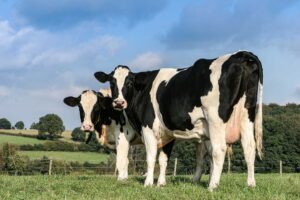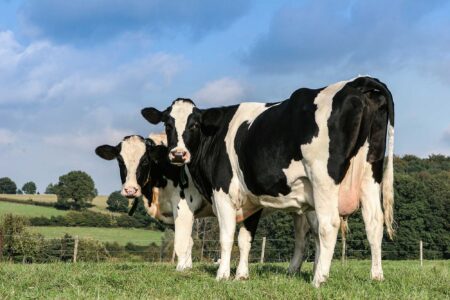The first state to complete the 2024 soybean harvest was a surprise: Minnesota has finished harvest, the USDA said in the latest Crop Progress Report, released Nov. 4. The state was 5 percentage points ahead of its five-year average for Nov. 3.
This is a change from 2023, when Louisiana was the first state to get all of its soybeans in the bin.
According to the June Acreage Report released by USDA, Minnesota planted the third-most soybeans in the country in 2024, at 7.53 million acres.
So why was Minnesota first this time around — and what did it mean for yields in the state? Successful Farming caught up with two soybean farmers in the state to provide insight.
Dry September Sets Up Early Harvest Window
Minnesota Soybean Growers Association (MSGA) President Darin Johnson, who farms in Faribault County near the southern border, said weather conditions played a big role in farmers getting into fields early to harvest. A really dry August and September pushed the harvest window up so much that farmers were in the fields harvesting soybeans by mid-September.
Darin Johnson
“That was just about the earliest we have ever started harvesting,” Johnson said. “We went 31 days straight, harvested all the soybeans and all the corn, and finished in the middle of the month (October). The quickest we have ever harvested our crop, and that is pretty much the same for everybody around this area.”
He said that beans dried so quickly that they started harvest in order to prevent a degradation in the quality of the crop.
Data from the Iowa Environmental Mesonet for September showed a consistent lack of precipitation in Minnesota during the month, with much of the state running 2 or more inches below the historical average amount of precipitation. Southern Minnesota, near Johnson’s farm, got nearly 3 inches less precipitation than the historical average.
Iowa Environmental Mesonet
This dry weather put yields at risk as soybeans began to dry up.
MSGA Secretary Kyle Jore, who farms in Thief River Falls in northwest Minnesota, said it was unusual for his farm to be complete before mid-October. In fact, Jore said he sometimes waits until the temperature drops into the teens to harvest, or until the ground is frozen.
“We had just really good weather, that’s the truth,” Jore said about the conditions.
Yields Disappointing, Weather to Blame
Despite an early and efficient harvest season, the variable weather conditions in Minnesota this growing season contributed to yields that were lower than expected, both farmers said. In the early spring and planting season, consistent rain and wet conditions delayed planting and damaged crops throughout the state. Jore said there were portions of his fields he never got planted because it was simply too wet, which hurt yields. He said soybean yields were OK but not great, ending up at his usual mark of 40 bushels per acre (bpa) even with those zeroed-out sections.
While soybean quality was fine on his farm, spring wheat was heavily impacted by the wet weather.
Darin Johnson
He said there were other farms in his area that faced similar problems.
“They just drowned out. Some guys went back in and tried to replant,” Jore said. “I know a few folks that did, and they just drowned out again.”
In southern Minnesota, yields were significantly lower — and flooding in the area through June and July had a big part in that. Johnson’s farm suffered some flooding during the summer months that drowned out part of his crop, he said.
Data from the Iowa Environmental Mesonet for the months of June and July showed some areas of southern Minnesota receiving upwards of 11 inches in excess precipitation compared with historical averages.
Iowa Environmental Mesonet
He said they were 15 to 20% under 2023 soybean yield numbers, and he heard similar numbers around the area. The variable weather conditions simply took a toll on the crop.
“Everything kind of just got started off on the wrong foot,” Johnson said. “Wet feet on soybeans in June and July, that just doesn’t work either. We thought in August we got what we were gonna call a few timely rains, but then it got hot and dry and it never rained again. That took some top-end yields off.”



:max_bytes(150000):strip_icc()/CattleInPasture-MediumShot-2000-006ea236d06949f8992c7c35d9ad26a0.jpg)
:max_bytes(150000):strip_icc()/iStock-501199714-2000-a12af4b2f0e646279967cc184628eea8.jpg)


:max_bytes(150000):strip_icc()/JohnsonMinnesotafarmflooding-2c0794247d094d7baa7c859169c44fb8.jpg)


:max_bytes(150000):strip_icc()/1-15159babad60407fb4f33de72f6d899c.jpg)
:max_bytes(150000):strip_icc()/46495119094_d2bc74feb9_o-2000-5b4c22e8d6b94a8cbafaea4e3819967d.jpg)